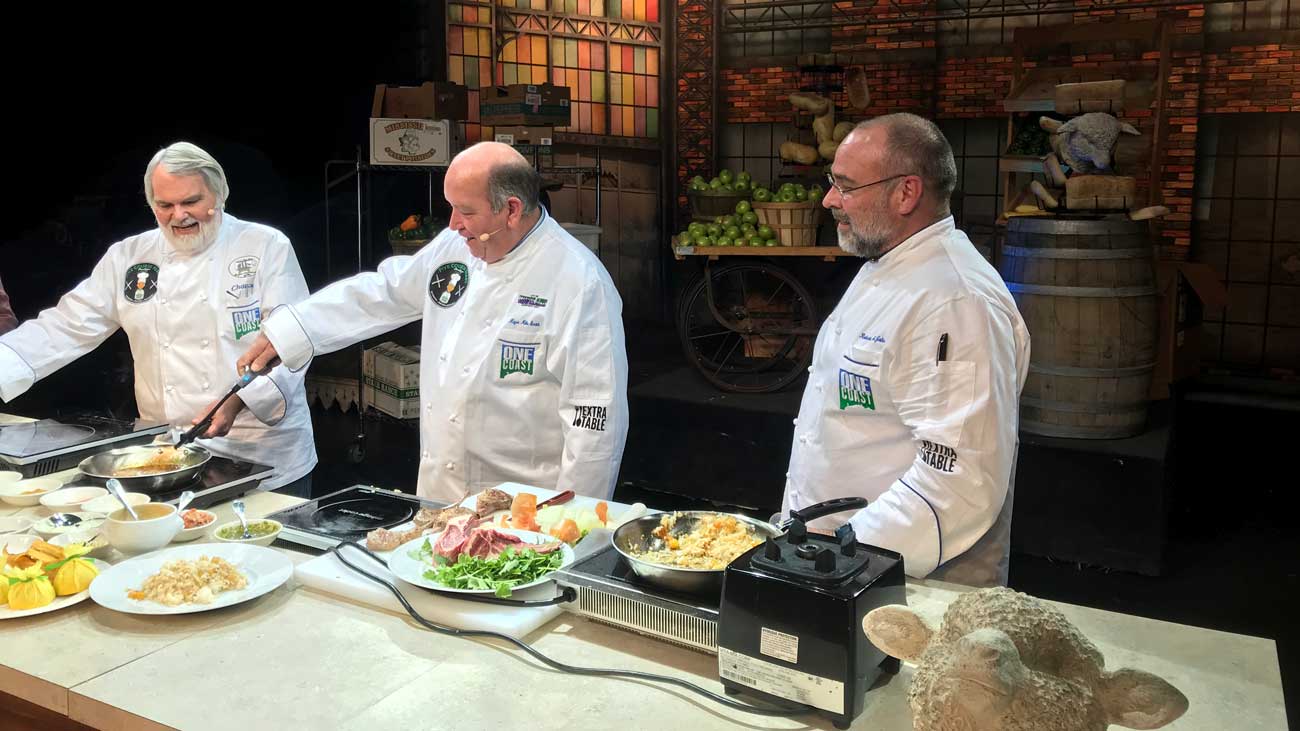One of the primary keys to success in the restaurant business is developing relationships— not only with your customers, but with your suppliers as well.
Nowhere are relationships more important than with seafood suppliers.
When my first restaurant, The Purple Parrot Café, opened in 1987 I had just moved home from a short stint in Destin, Florida. I knew that fresh Gulf fish was going to be the main focus of our menu, so one of the first items on my pre-opening checklist was to secure relationships with reputable fresh fish purveyors.
There weren’t any fishmongers in town, so we interviewed suppliers from Destin to New Orleans. We quickly learned that some folks are in business for the long term, and others are just trying to make a quick buck. After weeding out the fly-by-night suppliers, we established relationships with several seafood vendors who were able to get fresh-off-of-the-boat fish and drive it to us the next day.
Establishing those relationships were some of the best business decisions we ever made. If you’re going to hang your hat on serving fresh fish, you have two options: 1.) Find someone who will bring you good quality fresh fish, consistently, or 2.) Go fishing. I didn’t have the time (or the skill) to fish, so I went with the former.
Our fresh fish relationships are vital to the success of our business. We are kind of freaky about the freshness thing. We have such a commitment to serving fresh fish, that there have been several times over the years that we have had to send someone— a server, an off-duty cook, one of the partner’s wives— to New Orleans to pick up a load of fresh when we’ve run out and are faced with the option of serving frozen fish.
When dealing with fresh fish, it’s imperative to do business with people who deal directly with the fishermen, and demand quality. A restaurateur has to be ready to return any shipment if there is the slightest question about quality. Do that once or twice, and they start double-checking your order every time, sending the lesser product to those accounts that don’t scrutinize.
One has to demand quality. We are a pretty large seafood account. Between our two side-by side restaurants we purchase over 16 tons of shrimp, more than 5.8 tons of crabmeat, and almost seven tons of fresh fish filets every year. Most of the fish is local Gulf fish, but now, in these days of overnight delivery, we have been able to establish relationships with brokers and fishermen all over the planet.
While the casual New Orleans concept, Crescent City Grill, focuses mainly on local Gulf fish, next door at the Purple Parrot Café, we have expanded our reach and are purchasing fresh fish from all over the world.
Even though companies such as Federal Express and UPS have been shipping overnight for decades, it’s just been in the last several years that fish entered the fold.
The access that one can get with the right contacts is amazing. At the Purple Parrot Café, Chef Jeremy Noffke can purchase fresh-from-the-Atlantic Black Bass that comes straight to us before it goes to the Boston seafood market.
This fish is so fresh; we usually slice a piece off of a filet and eat fresh sashimi before we pull it from the ice while it’s still in the box.
In 1999, no one was air-freighting fish. Today, we can purchase line-caught fish from New Zealand and Hawaii that have the name of the boat tagged to the fish. Some come from dayboat collaboratives and others from independent fishermen. In the era of overnight delivery, we can receive Antarctic Butterfish from New Zealand fresher than Florida Black Grouper caught on net boats.
The world is getting smaller, 15 years ago, we couldn’t have dreamed of bringing in fresh fish from the lower Pacific. We now have contacts all across the eastern seaboard to the tip of the Florida Keys, San Diego, Hawaii, New Zealand, and Alaska. The fish is caught. The fishermen cut it, gut it, chill it to European standards, pack it in chipped ice, and ship it straight to our guy, who overnights it to us.
The fish is amazingly fresh. I received an email from our broker last week. It had a photo of a cleared-eyed Black Bass just after the skipper had pulled it from the water. The email stated, “These are fresh enough to take to any good vet and revive.” We were hooked, and bought 20 pounds before they were put on a truck to the New York Market. Our vet took the day off.
Redfish Orleans
6 Redfish Filet filets, 6–8 ounces each
1/2 cup No-Stick Grilling Marinade for Seafood (New South Grilling)
1 Tbl kosher salt
1/4 tsp black pepper, freshly ground
1/4 cup olive oil
3/4 pound shrimp, peeled and deveined
2 1/2 cups mushrooms, sliced
2 tsp garlic, minced
3/4 cup green onion, sliced
1 cup Creole Cream Sauce (recipe below)
1/3 cup Romano cheese
1/4 cup parsley, chopped
1/4 cup Romano cheese,
Brush the fish filets with the marinade and refrigerate 20 minutes. Season the fish with the kosher salt and black pepper.
Prepare the grill. Place the fish on direct, medium-high heat and cook 4-5 minutes. Turn fish and cook another 4-5 minutes or until opaque in the center.
Heat olive oil in a large sauté pan over high heat. Sauté shrimp for 2–3 minutes until they begin to turn pink. Add mushrooms and cook until tender. Add garlic and green onion and cook an additional 2–3 minutes. Add crawfish cream sauce and bring to a simmer. Remove from heat; stir in cheese. Divide evenly and spoon over fish. Garnish with fresh parsley.
Yield: 6 servings
Creole Cream Sauce
2 cups Heavy cream
1 Tbl Creole Seasoning
2 Tbl Worcestershire sauce
2 Tbl Hot Sauce
1 tsp Paprika
Place all ingredients in a double boiler over medium high heat and reduce by one-third, until thickened.
Yield: 1 1/2 cups



